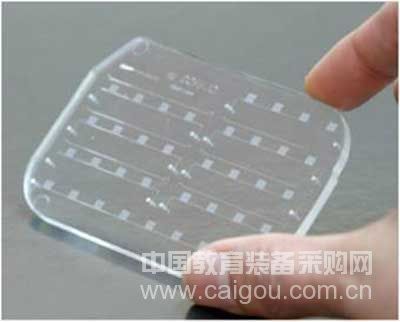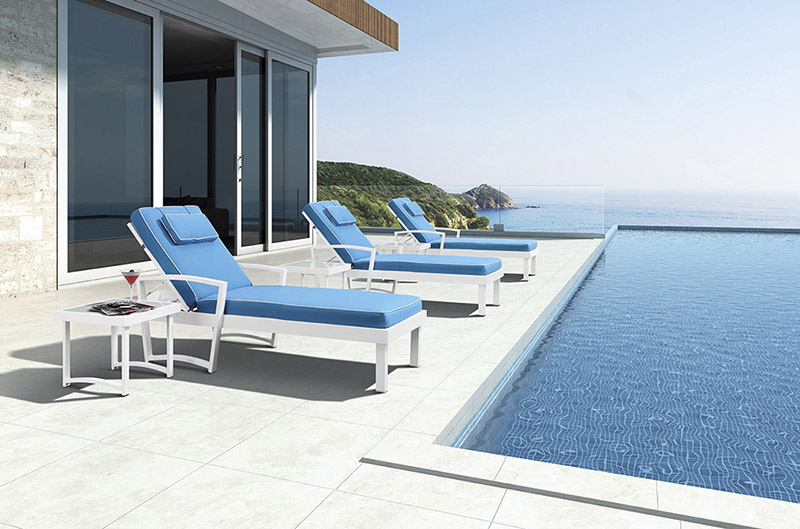China Educational Equipment Purchasing Network:
Mobile microfluidic chip is expected to fundamentally improve disease prevention
According to the American Physicists Organization Network, Samuel Saiya, associate professor of biomedical engineering at Columbia University, and his collaborators have developed a portable diagnostic device based on microfluidics. This kind of chip laboratory equipment can complete the biochemical testing projects that can only be carried out in the laboratory before. It has the characteristics of low cost, short time consumption, small size, and easy to read results. It is expected to make the disease prevention and control work in remote and backward areas fundamental. Change. Relevant papers were published in the journal Nature Medicine published on July 31.
The core of this inspection equipment is a mobile microfluidic chip called mChip. This chip is formed by injection molding. The cost of the chip is about $ 1, and the cost of the entire equipment is about $ 100.
Over the past four years, the Saiyan and Columbia University ’s Merman School of Public Health and three local NGO personnel have used this technology to provide medical diagnostic services to hundreds of residents in Rwanda.
The device can be conveniently taken to a remote area lacking a medical institution, only need to acupuncture the blood sample at the fingertip to run, and is not easily affected by the operator's mistake. The test results can be obtained within 15 minutes, which is also effective for newborns. This greatly reduces the time for patients to undergo testing, and also brings great convenience to medical workers. In addition, the researchers have developed a disposable credit card-sized diagnostic device that can give blood-based test results in minutes.
Saiya said that this technology is expected to help residents in Rwanda who have difficulty getting medical care away from the risk of AIDS and sexually transmitted diseases. He said: "For people in these areas, the diagnosis of infectious diseases is very important. When you come to these villages, you may carry a lot of drugs with you, but you do n’t know where the patients are and what they should take. Treatment, so the real challenge is still diagnosis. Our idea is to develop a convenient and practical test device, rather than forcing them to go to the medical institution to draw blood and then let them spend several days waiting for the test results. "
Saiya and colleagues are also conducting research in biochemistry, molecular biology, microfabrication, microfluidics, material chemistry, and tissue biology. Previously, with the help of technologies similar to the above-mentioned mobile microfluidic chips, they also developed a mobile microfluidic chip specifically for prostate cancer and clinical application in Europe in 2010.
The transformation from lithography and silicone to injection molding and plastics
Microfluidic technology originated in the semiconductor industry based on photolithographic silicon. In order to reduce costs and expand the scope of use, people must gather new materials and manufacturing methods, including metal etching, deposition, bonding, soft lithography, guides, electroplating, injection molding, embossed glass, ceramics, etc.

Mobile microfluidic chip mChip
Saiya published his research results in the journal Nature and Medicine and introduced the mChips chip in detail. The chip was jointly developed by Saiya's laboratory and Claros Diagnostics Inc. On June 22, Claros obtained the US "Mobile Distribution System and Method" patent. The storage and distribution method is a well-known challenge in microfluidic systems. The acquisition of this patent will provide more comprehensive protection for the company's storage and distribution method. .
Claros said that this patented technology allows multiple reagents to be stored at the same time and automatically distributed under a high degree of control, allowing the product to undergo a variety of analysis and identification. The patent has been allowed to be used in Japan, Australia, Canada and other places, and is expected to be applied in more regions.
Claros has successfully promoted blood quantification test products, which can be used to detect prostate cancer with a special mChip. This method was approved for use in Europe in 2010. As a tool, protein immunoassay testing can be used to test infectious diseases, cancer, immune diseases and other kinds of diseases. Historically, these complex tests can only be performed by trained scientists using expensive equipment in large laboratories, which not only increases the cost of testing, but also prolongs patient waiting time.
[Conclusion] Recent developments have shown that just as microelectronics triggered a revolution in the development of information science forty years ago, the chip laboratory will focus on analytical science and even the entire scientific technology and related industries in the future development. Have a similar effect. The computer chip miniaturizes the calculation, and the chip laboratory miniaturizes the laboratory. Therefore, in the biomedical field, it can reduce the consumption of precious biological samples and reagents to microliters or even upgrade, and the analysis speed is doubled and the cost is increased. Times down; in the field of chemistry it can enable analysis and synthesis that previously required a large number of samples, reagents and a lot of time to complete in a large laboratory, and will spend a small amount of samples and reagents on a small chip in a very short time At the same time, a large number of experiments are completed; in the field of analytical chemistry, it can make the previous large analytical instruments into square centimeter size analyzers, which will greatly save resources and energy.
The chip laboratory is also a "green" technology because of its low pollution. The combination of injection molding technology and this emerging field will definitely open up a new sky for life sciences and benefit human health care. (Xie Yinan / Editor)
Aluminium Garden Lounger Furniture
Outdoor Aluminum lounger furniture to make your enjoy your life in the poolside or hotel.The powder-coated aluminum frames are stackable for space-saving storage.
With waterproof UV resistant fabric, make you feel super comfortable.
Easy to clean and keep, outdoor aluminum lounger furniture save your labor keep cost.
· Traditional forms with a spacious, inviting scale
· Rust-resistant powder-coated aluminum frame.
· Comfortable 30 density cushion foam.
· Secure tempered glass for dining table and coffee table.
· Waterproof fabric for cushions.
Outdoor aluminum furniture with high quality and long time guaranty.

About us:
1.our factory is more than 20000 square meter big.
2. Our showroom is about 800 square meters.
3. we have professional sale team and more than 200 workers.
4. The capacity of our factory is 60 containers/month.
5. we attended CIFF furniture fair and canton fair.
Welcome your further inquiry for further discussion, also welcome to visit our factory to talk face to face.
Wicker Aluminium Garden Lounger Furniture,Patio Aluminium Garden Lounger Furniture,Rattan Aluminium Garden Lounger Furniture,Chaise Lounger,Lounge Furniture
Golden Eagle Outdoor Furniture Co., LTD. , https://www.gepatio.com